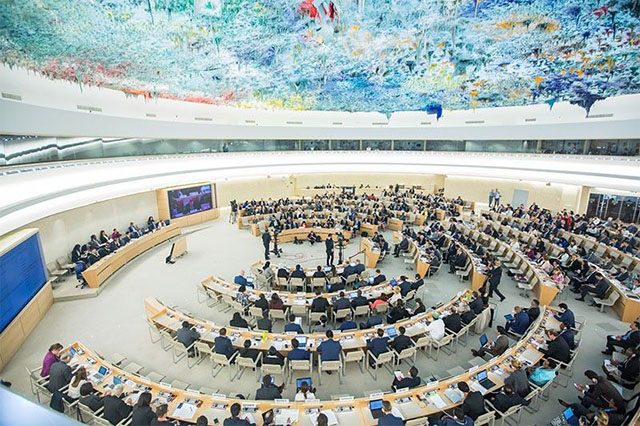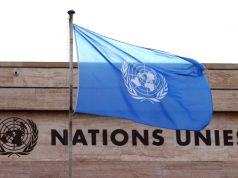
After Malacañang lauded the Philippines’ election on the United Nations Human Rights Council, critics pointed out that there wasn’t any opportunity for competition as every country is given the chance to become a member.
Presidential spokesperson and chief legal counsel Salvador Panelo said that the country’s inclusion in the UNHRC meant that the international community has “acknowledged” the Philippines’ controversial anti-drugs campaign.
Despite his positivity, critics observed that there was no chance for countries in the Asia-Pacific region to compete with each other since some countries didn’t apply for a second term while others have already served their terms before.
Senator Risa Hontiveros commented, “It is grossly misleading. It exposes the government’s ignorance of the UN’s complex dynamic. Ano ito, lotto, nanalo tayo? The Duterte government cannot claim winning a seat on the UNHRC when all UN member-states agreed to take turns sitting on the council.”
Senator Leila de Lima reiterated that there was no direct competition among the candidates.
“It should not escape us that for the first time in the UNHRC’s history, the five (5) voting regions, including Asia, had only submitted as many candidates as there were seats available, thus removing competition, a move seen by some in the international human rights community as a ‘mockery of the electoral exercise’,” she said.
A look at the seats in the UNHRC
According to the United Nations, there are five seats open for the council’s Asia-Pacific region. There are 47 seats in total which are distributed to five regional divisions. Only 18 seats are open for this year’s council elections.
For the Asia-Pacific region, there were five candidates in consideration this year—Bahrain, Bangladesh, Fiji, India and the Philippines.
Those continuing their terms in the region are Afganistan, China, the Democratic People’s Republic of Korea (North Korea), Iraq, Japan, Nepal, Pakistan, Qatar and Saudi Arabia.

Meanwhile, those who already finished their terms and are ineligible for nomination are the Republic of Korea (South Korea) and the United Arab Emirates.
Ruben Carranza, director of the Reparative Justice Program at the International Center for Transitional Justice, explained how the Philippines effortlessly got a seat in the council by likening it to that of 193 people sharing a five-seater car.
“When you have a five-seater car and the 193 persons who share it agree that only 5 people at a time can take turns riding in it, you can’t claim you ‘won’ a seat if it was your turn to ride with 4 others,” he shared.
Carranza also noted that out of the five Asian-Pacific countries, the Philippines got the lowest vote in terms of being a UNHRC member.
Citing data taken from the United Nations website, he said, “With no one else contesting the 5 UNHRC seats for the Asia-Pacific region, the Philippines still got the least number of votes in the secret balloting that took place among the 193 countries in the UN General Assembly.”
The Philippines got 165 votes, the lowest among the Asian-Pacific countries. India got 188, Fiji got 187, Bangladesh got 178 and Bahrain got 165.
A majority of 97 votes must be considered for a country to get elected in the UNHRC.
How countries get elected in the UNHRC
According to the United Nations, elections to the UNHRC are conducted annually. Each country who is a member of the United Nations is given the chance to serve in the council for three years on a rotational basis. However, some seats expire by December 31 of each year.
The United Nations General Assembly is in charge of the election process and every country has an equal voting weight in the council.

UN explained that countries are divided into geographical groups to ensure a “fair consideration” in the council seat.
“The geographical group divisions and seat allocations are meant to prevent disproportionate focus on just a handful of regions and countries, and ensure that every country has a chance of fair consideration,” it said.
The organization also shared that it allows “extra blank slates” to “theoretically ensure (that) there are more candidates than (the) available seats, enabling a competitive process.”
It continued, “However, if—as was the case this year with 18 candidacies for 18 available seats—no extra countries apply, then no competition occurs, and whichever Member State applies, is likely to get elected.”
The UNHRC is an inter-governmental body that is composed of 47 members who are supposed to promote and protect human rights around the world. They convene three times a year to review each country’s human rights situation.









